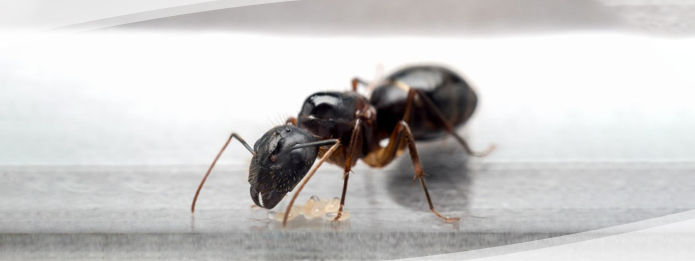 Sometimes spring feels like it’s too early to worry about insects invading your home. After all, there are still plenty of cold nights that make it seem like winter may not be gone yet. However, this time of year is when you need to be watchful for carpenter ants. Since most of the damage these pests inflict is hidden, you need to be on your toes to spot an ant infestation while it is still small or, even better, prevent it altogether.
Sometimes spring feels like it’s too early to worry about insects invading your home. After all, there are still plenty of cold nights that make it seem like winter may not be gone yet. However, this time of year is when you need to be watchful for carpenter ants. Since most of the damage these pests inflict is hidden, you need to be on your toes to spot an ant infestation while it is still small or, even better, prevent it altogether.
Why You Need To Be Watchful in Spring
Wood surfaces are vulnerable in the spring because winged swarms of queens and drones leave their existing nests to start new ones, and the damp weather can make the wood in and around your home look appealing. Carpenter ants cut tunnels through the wood to make their nests, and then they venture out to scavenge for food. Scraping wood away one grain at a time is hard work, so when they swarm, they look for damp, soft wood. Spots that already have enough damage to protect tiny eggs are especially appealing to a swarm on the lookout for a new home.Prevent an Attack
The good news about carpenter ants is we understand how they think, which can help you prevent an infestation and the damage it would cause. They want soft, weathered wood and a source of water, so if you can deny them one or both of those two things, they are not likely to want to move in. Go over your house and property to look for leaks and condensation. Make the needed repairs to minimize or eliminate the damp. Next, go back through your home and yard to look for damaged or weathered wood, including wood from plants and fire pits. Ants that take up residency in an old stump or decaying tree branch next to your house are not going to be ideal neighbours. Remove, protect, or repair all wood that looks like it might be an appealing home to a carpenter ant colony. This includes the following recommendations:- Paint or stain all outdoor wooden structures, such as a deck. Refinish the wood as often as needed to keep it looking new.
- Clear away all plant debris, and keep branches trimmed back far enough that they do not touch your house.
- Keep firewood off the ground and covered tightly enough that it is not exposed to the weather or insects.
Watch for Signs of an Existing Ant Infestation
While following the above prevention measures significantly lowers your risk, they do not guarantee you will stay invisible to carpenter ants, especially if you already have these unwelcome visitors without knowing it. With the structure of your home at risk, it is important to know and watch for the signs of an infestation:- Small piles of wood dust — Ants bite wood to build tunnels, but they spit it back out since they don’t eat wood, and it falls to the ground below.
- Light rustling noises from your walls — Believe it or not, it is possible to hear ants slowly destroying the frame of your home. The noise they make is quiet, but unexplained noises coming from your walls is not something to ignore.
- Ants — It may seem self-evident that seeing ants is a sign of an infestation, but they forage for food individually, so this sign is sometimes easy to overlook. Seeing a swarm trapped inside your house this spring strongly suggests that they came from inside.

